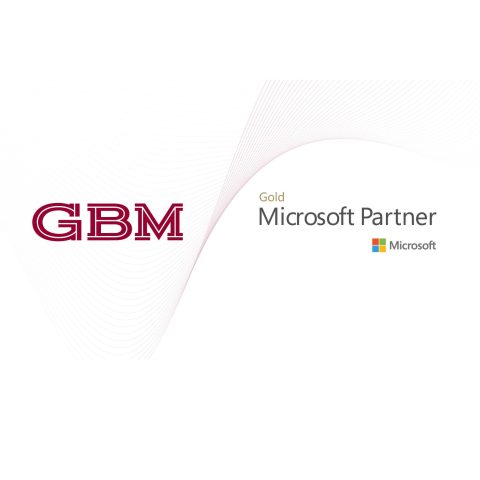Share this
Georges Hobeika, CIO Of QIIB: 4 Tips To Tide Over Banks’ Digital Transformation Challenge
The digital payments landscape has been witnessing rapid growth for quite some time, especially in the last decade. But it got an unexpected ‘big push’ this year as COVID-19 hit the world and contactless payments became people’s preferred mode of transactions.
As a result, banks have been left with no other option but to invest heavily in both technology and people in a bid to speed up the transformation of complex operational, mobile, and internet banking processes, as well as in customer-friendly interactive platforms.
With the pandemic battering businesses across the world, nobody knows how long this will continue. Here are some lessons that the strategists of banks can adapt to stay ahead.
Lesson 1: Priority on digitizing complex processes
Banks are going full-throttle on digital transformation, which is part of their pursuit to roll out game-changing innovations to keep pace with evolving customer demands. They are regularly debuting state-of-the-art solutions, including new cashless payment methods and artificial intelligence (AI)-powered services.
“The immediate outcomes were a significant reduction in the operational risks, improvement of data quality and ability to shift the related workforce from performing repetitive low-value tasks to more value-added activities,” says Georges Hobeika, chief information officer of Qatar International Islamic Bank (QIIB), who expects an optimum operational cost in the long run due to a flattening learning curve.
“Thanks to the digitalization and the ensuing reduction of manual work, physical location is not a constraint anymore, tasks can be performed remotely without compromising the staff productivity or information security.”
Similarly, a research report released by ResearchandMarkets.com in July this year showed that the digital payments industry has recorded robust growth, with new providers, new platforms, and new payment tools over the years.
Lesson 2: Plan strategies to suit changing customer behavior
There has been a paradigm shift in the behavior of bank customers in the aftermath of the pandemic.
“The acceptance of digital payment methods is expected to improve post-COVID-19 and play a stronger role in the long term. With cash being seen as a potential carrier for the virus, governments and regulatory bodies are discouraging its use. These factors are influencing the growth of the market,” adds the ResearchandMarkets.com report.
“Digital channels have become our main delivery streams. Customers’ expectations have changed; more than ever, they require instant delivery of services anytime and anywhere,” Hobeika says. ”These changes have led us to shift our paradigm and think digital first when designing our services or products. In fact, delivering a service or a product via our omnichannels is not optional anymore.”
Bank customers, who now carry a bank in their pocket in the form of a smartphone, have realized that digital channels are as trustworthy as the branches. The Sharia-compliant bank’s digital channel penetration has doubled to 70% now from 35% before the pandemic.
Lesson 3: Introduce an interactive platform
Banks automate their processes end-to-end, starting from the customer transaction’s initiation to its execution at the backend to offer a better customer experience with the help of their technology partners or Fintech firms.
The Doha-based bank also aims to make its omnichannels into an IBM technology-based interactive platform that integrates and simplifies customers’ daily lives, which is much more than delivering digital banking services. This platform would give them real-time insight into their financials, guide them in taking not only the right financial decisions, but also allow them to set objectives.
“At the front end, we aim at providing a frictionless customer experience through our digital channels. At the back end, we are building a digital core to automate most, if not all, our internal processes,” Hobeika points out.
QIIB has partnered with GBM Qatar, one of the leading technology providers in the country, to supply the required expertise to execute the bank’s digital strategy. “We have built various joint teams who work as one (team) to deliver the projects successfully.” GBM served the bank through local teams and their off-shore delivery centers. Choosing the right partner was the only way to achieve the bank’s objectives.
QIIB’s previous “customer onboarding” platform was unable to integrate with omnichannels and anti-money laundering systems. Subsequently, the bank has decided to streamline the process and build it on a platform that fully integrates with the other systems and channels.
Further, the bank has initiated a project with GBM Qatar to deploy the process using IBM’s business process management (BPM) technologies. It has formed a team with business and technical stakeholders, who re-engineered the process, developed it, and deployed it in the branches and the back office. “The next phase is to deploy customer onboarding on our omnichannels.”
Lesson 4: Offer maximum value to customers
Banks also focus on providing a frictionless journey and maximum value to customers from every online transaction. When customers engage with the digital channel, they get some valuable information to help their day-to-day decisions.
For instance, when a household’s electricity bill rises for three consecutive months, the bank sends an alert to the customer to optimize their expenditure. This is done with the help of artificial intelligence, machine learning, and analytics. “All banks are going in the same direction,” explains Hobeika.
The growth in online transactions will benefit financial institutions, merchants, consumers, and the entire society by offering enhanced visibility into payments, enabling better cash management that in turn helps businesses better manage their daily operations.
Source: Forbes Middle East



